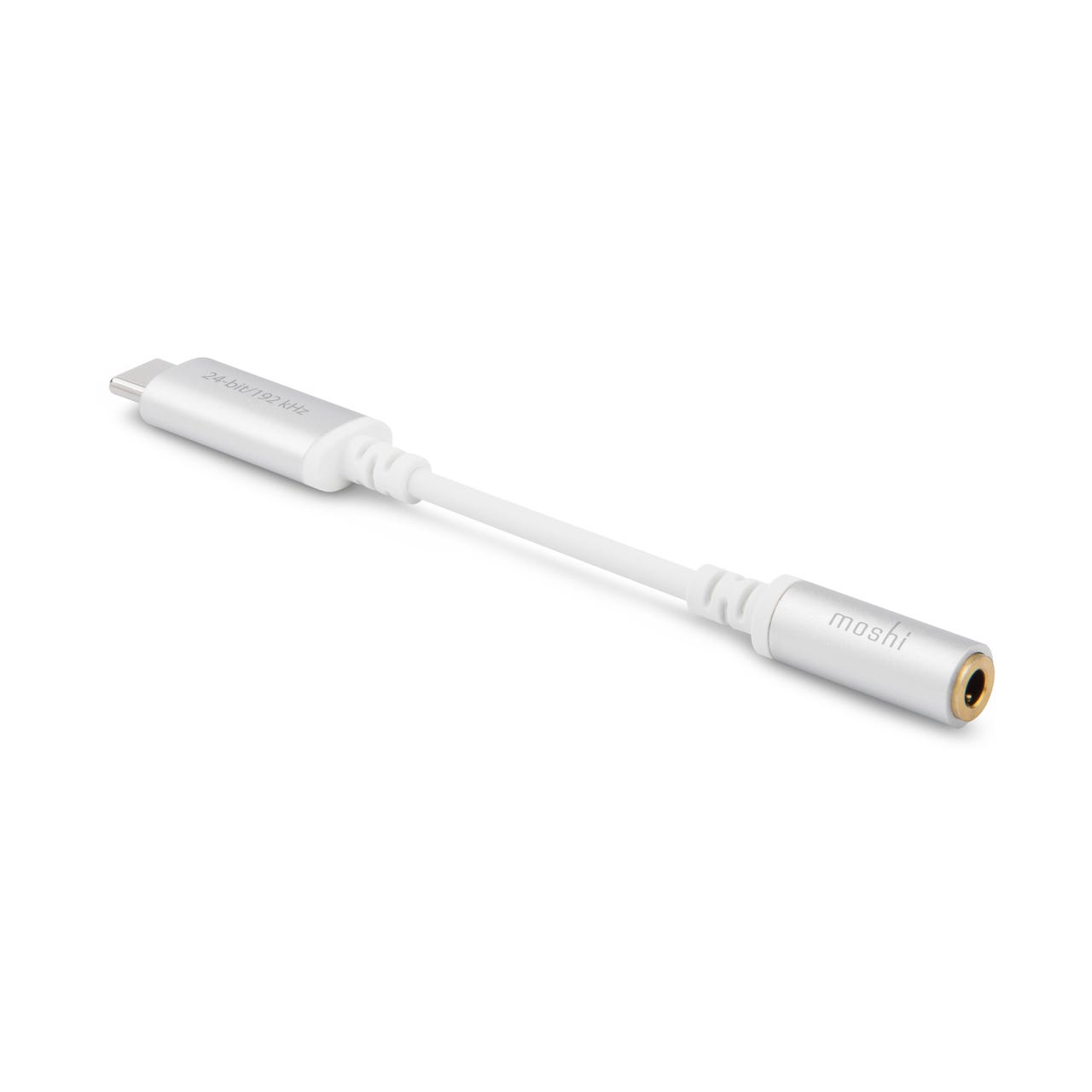Hands on: Testing out USB-C Audio for PC and smartphone

The death of the headphone jack has been widely lamented. Pick up a flagship phone and you won't see one, it's gone and it's not likely to come back. But that doesn't mean we're left using Bluetooth for music or phone calls. We can still use the iPhone's Lightning and Android's USB-C ports for audio, either via adapters that give us audio jack connections or with wired headphones that come with the appropriate connector,
I've been spending time with some USB-C audio hardware, using it with a Windows PC with USB-C ports and with a recent Samsung Galaxy Note 10+. While my test PC has a headphone jack, it's awkwardly placed on the side of the screen, so using a USB-C audio device puts the audio connection down by the keyboard, a much easier position for the cable. Moshi's USB-C DAC adapter and its Mythro C headphones are intended to work with Android phones but are a good match for the current generation of PCs as well.
SEE: IT pro's roadmap to working remotely (free PDF)
Much of modern PC and smartphone audio is digital, using built-in digital audio convertors (DACs) to deliver analog audio from digital streams. But those DACs are sat in a relatively noisy electrical environment and the constraints of PC design mean they are often shoehorned into corners away from the audio output. That makes it easy for the signal to get distorted, and while those distortions are usually imperceptible, they can change the sounds you here, introducing harmonics and sampling errors.
I've actually been using the £24.95 Moshi USB-C DAC with a PC, where it's doing sterling service driving a set of over-the-ear headphones and a pair of custom in-ear monitors. Sound quality is good, from local sources and from streamed audio. There's no need for specialized drivers, with both headphone and microphone support. With a standard headphone jack you're not forced to buy new headphones if you're happy with your existing set.

Moshi's USB-C DAC is slim and easy to carry.
It might seem a little odd to update the firmware on a USB audio device, but software signal processing is a complex domain, mixing subjective audio experiences and the capabilities of the underlying hardware. Moshi provides an app (download it from their site) to update its devices; it's a quick and easy process, the hardest part of which is extracting the app from a series of nested zip files.
Moshi's £49.95 Mythro C headphones are built around the same DAC as their headphone adapter. That's a good thing, driving the underlying audio quality. There's an Android app to update firmware and to tune the headphones' audio profile using a familiar equalizer-like UI. It's easy to use, though I found I preferred the default profile for most of my listening.
The headphones are a complete headset with a microphone and a set of control buttons that include access to Android's Google Assistant. You can use this to control your device without taking it out your pocket, a useful feature when commuting or exercising where your phone isn't readily accessible.
Mohsi's USB-C headphonbes have their own built-in DAC.
Perhaps the biggest issue is that it's impossible to use the headphones and charge your phone at the same time; unless, of course, your phone supports wireless charging and you have a lay-flat charging pad. I tend to use stand-up charging pads on my desk and found the headphones didn't balance well, even with a central USB-C port. It's not a showstopper, but you may need to rethink your desk if you're going to listen to or stream music from your phone when you're working. There is a version of the DAC with a power port, so you can use it to charge and listen at the same time.
I was tempted to try the Mythro C headphones out with an iPhone using a Lightning to USB-C adapter. However, the one I have to hand is only suitable for power and doesn't carry audio signals. That's going to be a long-term problem for USB-C audio: there's no way of telling whether a connection or a port supports USB audio. Some are only for power and data, some just for video, with no way of easily distinguishing dongles and cables.
While it's clear that USB-C connectors make it easier to waterproof devices and take up less space, the argument over their (and Lightning's) suitability for audio is one that's going to run and run. Moshi's USB devices work well, and I've found their audio quality comparable to other headphones. The Mythro headphones are a definite upgrade over the bundled headset, and the DAC means I'm able to continue using a set of high-quality custom-molded monitors that have become my main travel headphones.
Certainly I'm a convert, and USB-C audio has become a part of my everyday carry (even if it's only around the house at the moment).
Read more reviews
- Asus Chromebook Flip C436 review: A top-quality convertible Chromebook with a premium price tag
- Speck Presidio cases for Apple iPhone SE: Two layer drop protection
- Gear4 cases and InvisibleShield protectors for iPhone SE (2020): D3O drop and advanced screen protection
- Dynabook Portégé X30L-G review: A super-light and durable ultraportable with good connections
- Logitech Combo Touch keyboard and Pebble i345 mouse hands-on: Enhanced productivity for cheap Apple iPad owners